Table of Contents
"One Man's Vulgarity": Art Censorship on American Campuses

This report tells of some of the controversies that FIRE has highlighted or intervened in over the nearly two decades we have spent fighting for freedom of speech on campuses. The artwork described here expresses a multitude of ideological viewpoints and depicts subjects ranging from critical illustrations of the Confederate flag to theater productions about Lenny Bruce to posters of beloved television characters. The one thing they all have in common is not the message they send, but the censorship their messages provoked.
Introduction
“Fuck the Draft.” Those three words rose through the courts to capture the attention of the Supreme Court of the United States. It might seem odd that so much attention would be paid to three words emblazoned on one man’s jacket, or that they might have any bearing on the rights of artists — but seemingly trivial matters like the message on the back of a jacket can play a pivotal role for artistic freedom.
In Cohen v. California, the Supreme Court overturned the conviction of a man arrested for wearing a jacket bearing the words “Fuck the Draft” in a Los Angeles county courthouse. Writing for the Court, Justice John Harlan observed that individuals, rather than the government, are best suited to determine what expression is most meaningful to them. The Court suggested that those offended by Cohen’s message, or by the words with which he expressed it, and who wished to avoid viewing it could achieve that “simply by averting their eyes,” rather than through expecting government intervention.
This deference toward expression and individual preference hasn’t always been the rule in America. The first conviction in the United States for “obscene libel” happened in the country’s early years, and works considered obscene consumed much of censors’ attention in the nineteenth century. The novel Fanny Hill, a fictional memoir told from the perspective of a prostitute, was formally banned from 1821 until the prohibition was finally rescinded 145 years later.
“For, while the particular four-letter word being litigated here is perhaps more distasteful than most others of its genre, it is nevertheless often true that one man’s vulgarity is another’s lyric.”
Justice John Harlan, Cohen v. California, 403 U.S. 15, 25 (1971)
The preoccupation with censoring artwork branded obscene endured into the twentieth century, leading to famous trials like those surrounding the novels Ulysses, Lolita, and Lady Chatterley’s Lover. Favorable rulings in these cases, and what those rulings meant for First Amendment protections, helped limit the reach of the censor.
Twentieth-century cases like Hustler Magazine v. Falwell, which established protection for offensive parodies, continued to chip away at the legal basis for much artistic prohibition, but some restrictions on artistic freedom still remain. In Miller v. California, the Supreme Court upheld the principle that work considered legally obscene does not receive First Amendment protection.
Incensed public outcries in the late twentieth century, joined and rallied by some government officials, brought increased attention to the government’s role in the arts after government funds went to support the photograph titled Piss Christ and an exhibition of Robert Mapplethorpe’s homoerotic images.
College campuses have not been immune from controversies provoked by artistic expression, or by the all-too-common impulse to hide upsetting artwork rather than grapple with its message. “One Man’s Vulgarity” takes a closer look at the stories of students and faculty who had an idea to share — and how those who didn’t want to see it responded with censorship, rather than by averting their eyes.
This report tells of some of the controversies that FIRE has highlighted or intervened in over the nearly two decades we have spent fighting for freedom of speech on campuses. The artwork described here expresses a multitude of ideological viewpoints and depicts subjects ranging from critical illustrations of the Confederate flag to theater productions about Lenny Bruce to posters of beloved television characters. The one thing they all have in common is not the message they send, but the censorship their messages provoked.
Art is open to interpretation — and misinterpretation
“Today these signs may no longer exist, but the system that they once reinforced still does.”
Ashley Powell, University of Buffalo Student
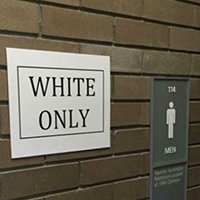
(Credit: Micah Oliver / The Spectrum)
In 2015, University at Buffalo student Ashley Powell posted “White Only” and “Black Only” signs outside water fountains and bathrooms on campus. The signs were intended to force viewers to confront systems of racism that the artist believed still remain in America. Powell wrote, “Today these signs may no longer exist, but the system that they once reinforced still does.”
The signs were meant to serve as a commentary on racism, not as a manifestation of it. But not everyone on campus saw it that way. In response to outrage over the signs, campus police removed the signs and administrators announced, despite their understanding that the signs were part of a student art project, that they would “review this matter through appropriate university policies and procedures.”[1]
Powell was far from the first student to find her artwork censored based on a misunderstanding of an artist’s intentions. Across the country, students and faculty have discovered that their criticism of societal ills was instead perceived as perpetuation of them.
University of Iowa: “In Their Shoes”
In 2014, responding to the grand jury decisions in the Michael Brown and Eric Garner cases and the #BlackLivesMatter protests that followed, University of Iowa Visiting Assistant Professor Serhat Tanyolacar created a Ku Klux Klan hood and robe covered in a collage of newspaper images of racial violence. In December, Tanyolacar placed it in the Pentacrest, an open area in UI’s campus, and remained nearby to discuss the installation with students and others who passed by. As public attention to the artwork increased, so did opposition, culminating in UI officials’ instruction to Tanyolacar to remove it that same day.
In an email released to the campus community that afternoon, Vice President for Student Life Tom Rocklin explained the decision to remove the display: “There is no room for divisive, insensitive, and intolerant displays on this campus. The display was not approved by nor sanctioned by the university. The UI respects freedom of speech, but the university is also responsible for ensuring that public discourse is respectful and sensitive.” Two days later, President Sally Mason sent another email apologizing “[f]or failing to meet [UI’s] goal of providing a respectful, all-inclusive, educational environment,” and stating that Tanyolacar’s installation “immediately caused Black students and community members to feel terrorized and to fear for their safety.”[2]
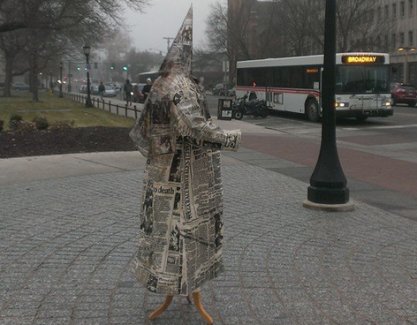
(Credit: Serhat Tanyolacar)
Despite the university’s failure to acknowledge the intent of the display, and its preference for censorship over conversation, some students chose to engage with Tanyolacar’s art. In comments to the press, one student explained that, upon first seeing it, he thought “[t]hat kind of art should not be displayed with all that is going on in the black community.” But after speaking to Tanyolacar, he said, he realized that the goal was to “bring light to racism” and to “show people that this stuff is going on today.” Another student explained that he “really did want to burn” Tanyolacar’s installation, “[b]ut after talking to him, we see what he’s trying to do.”[3] Unfortunately, UI administrators didn’t reach that same conclusion.
Salem State University: “State of the Union”
In November 2016, Massachusetts’ Salem State University asked artist Garry Harley to supply artwork about the presidential election for an exhibit titled “State of the Union.”
Harley’s contribution, which included photo illustrations of the Ku Klux Klan and of Jews arrested after the Warsaw Ghetto Uprising in German-occupied Poland during World War II, was intended to emphasize the connections he saw between President Donald Trump’s campaign rhetoric and historical efforts to oppress minority groups.[4]
Soon after, students voiced complaints about the imagery in Harley’s work. One student wrote, “Why did Salem state think it was OK to put a pic of the KKK in the art gallery during election time??” The university responded by first covering the glass doors so that the gallery’s content would not be visible from outside, and then posting a sign outside warning of the content inside.
After hosting an open forum for students to voice concerns about the exhibit, the university announced that it would be temporarily closed. Salem State issued a statement apologizing “to those in the campus community who have experienced distress resulting from this exhibit.” The statement continued: “We are sorry. Yesterday’s conversation made clear the strong emotions this exhibit has caused.”
Days later, Salem State reopened the exhibit — but this time, with drapes around Harley’s KKK painting, presumably to protect students from accidentally viewing it.[5]
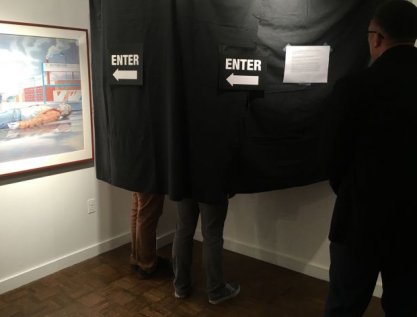
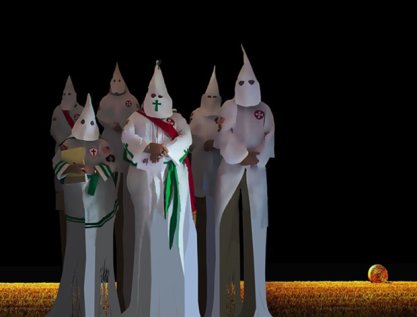
Winthrop University: “Tillman’s Legacy”
For over three weeks in November 2016, Winthrop University student Samantha Valdez feared that she would be suspended or expelled. That’s because her university’s police department launched an investigation into her involvement in an art installation critical of the namesake of the university’s administration building — and, in particular, his connection with South Carolina’s history of lynching.[6]
That year, controversies over the namesakes of buildings on college campuses erupted nationwide, and Winthrop was not immune. The university’s Tillman Hall — named after South Carolina’s governor Benjamin Tillman, whose time in office from 1890 to 1894 saw an increase in the lynchings of African-Americans — became the center of student protests for months during the 2016 fall term.[7] As part of the protests, Valdez participated in an artist collective’s creation of an installation during the weekend of November 12. The installation featured small figures hanging from the trees outside Winthrop’s Tillman Hall alongside a sign reading “Tillman’s Legacy.”
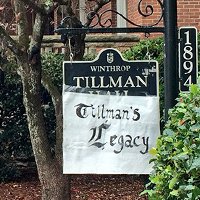
Shortly after the display was discovered, President Daniel F. Mahony emailed the campus community, announcing that the installation was under investigation by campus police. Mahony noted, “While we do not know the intent of this display, these images are clearly hurtful and threatening and are contrary to the values of Winthrop University. Actions such as these are not, and will not be, acceptable on this campus.”[8]
On behalf of the group responsible for the display, Valdez released a statement about her intent: “Art challenges one to think, to provoke, even to disturb, in a constant search for truth. Arousing our emotions, expanding our sympathies in directions we may not anticipate and may not want. . . . Tillman Hall should incite the same rage, sadness and fear the artwork did. One should question, why this artwork is offensive and not the building itself?”[9]
On November 21, Valdez received a letter from the university charging her with violating campus policies prohibiting “[b]ehavior that disturbs the public order and peace” and “disorderly conduct,” and informing her that she could face suspension or expulsion for the violations. Fortunately, after intervention from FIRE and the National Coalition Against Censorship, Valdez was cleared of the baseless charges against her and allowed to continue her education.[10]
Gustavus Adolphus College
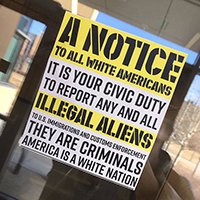
As white nationalist recruitment efforts spread on American campuses in 2017, student counter-protests did as well. At Minnesota’s Gustavus Adolphus College, those protests took the form of satirical notices calling on “all white Americans” to report “any and all illegal aliens” because they are “criminals” in a “white country.” The student-organized Diversity Leadership Council, which was responsible for posting the flyers, did so not to support white nationalist recruitment efforts, but to draw attention to anti-immigrant rhetoric the council opposed. The student group even posted disclaimers alongside the posters explaining their purpose.
The posters were ripped down after only five minutes by students offended by their content. Worse, an administrator told reporters that there were “multiple students who reported the incidents to the institution and that’s the kind of positive bystander interaction [the administration] would hope for.” But at a private university that professes its support for free speech, the positive result would have been students using their own speech to answer posters they disliked, not tearing down posters and reporting them to campus authorities — and earning praise from administrators for doing so.[11]
The incidents at the University of Iowa and Winthrop University show that sometimes art is censored because its use of offensive imagery is misunderstood by viewers who see it as an endorsement of a certain viewpoint, rather than a criticism of it. More often, however, political artwork is censored because viewers do understand its imagery and intent — and don’t like what they see.
Gainesville State College: “Heritage?”
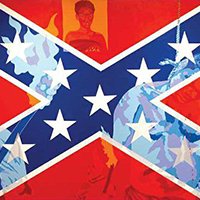
The Confederate flag remains one of the most divisive symbols in American history, and its incorporation into artwork has proven unsurprisingly controversial. That’s the lesson instructor Stanley Bermudez learned when he contributed a painting to the 2011 Faculty Biennial Exhibition at Georgia’s Gainesville State College. The painting, “Heritage?,” depicted torch-wielding Ku Klux Klan members and a lynching superimposed onto the Confederate flag.
Bermudez wrote a statement to be displayed with the painting, noting, “This painting represents what I feel and think of when I see the flag.” However, he added that he “like[s] to show two sides of the coin” and was “in the process of creating an accompanying painting of a Rebel flag that shows the image in a more positive manner.”[12]
Bermudez’s explanation proved irrelevant to Gainesville president Martha Nesbitt, who removed the artwork without notifying Bermudez or the gallery’s director after public criticism of the artwork’s commentary on the flag. Nesbitt claimed that her decision to remove the painting “was not based on any one group’s agenda, complaint, or the overall content of the painting. It focused solely on the image that has been perceived as aggressively hostile in other areas of the country and other academic institutions - that being the graphic depiction of a lynching.” Bermudez’s painting remained censored during the entirety of the art exhibition.[13]
University of New Hampshire: Sexual Assault Awareness

Intending to draw attention to Sexual Assault Awareness Month in April 2017, University of New Hampshire student Jordyn Haime worked with the university’s Sexual Harassment & Rape Prevention Program to send out a survey to students about street harassment and incorporate the results into an exhibit featuring students’ experiences.
One of the exhibit’s creators informed the staff of the university’s Memorial Union Building about the concept of the display, and Haime installed it on March 17. The exhibit contained statistics from the survey and quotes from street harassment experienced by students, including “You look like sluts,” “I’ll buy you a drink if you suck me off,” “Flash your boobs,” and more.
Within hours, Haime’s display was taken down and replaced with a display praising students’ contributions to the community. UNH justified the removal of the exhibit under a Memorial Union Building posting policy prohibiting “hate speech” and “profane/vulgar language.”[14] UNH later agreed to allow a modified version of the exhibit to return to its original location inside the Memorial Union Building, but only after Dean of Students Ted Kirkpatrick explicitly identified quotes that he would allow in the revised version.[15]
FIRE wrote to UNH to express concerns about the display’s removal. Fortunately, just a little over a year later, the university revised its speech codes to earn FIRE’s highest rating for free speech, perhaps demonstrating that it learned an important lesson from the Memorial Union Building episode.[16]
Arcadia University: “Waste Show”
Professor Alan Powell experienced one hurdle after another in spring 2017 over an anti-Trump art display he installed at Arcadia University, located just outside of Philadelphia. “Waste Show,” produced by video collective Termite TV and created by Powell and a group of Arcadia alumni and students, was displayed for five weeks in the university’s Murphy Hall. The installation featured tweets, speeches, and recordings from Trump; a Bob Dylan song; audio and video from the Nazi propaganda film The Triumph of the Will; miniature phallic figures intended to look like Donald Trump; and more.
“they suffered an adverse impact from exposure to your exhibit” — Rhonda Hospedales, Assistant Vice President of Human Resources
On March 3, Powell was informed that a student had anonymously filed a complaint about the exhibit. The student wrote: “I don’t want to have to see and hear the footsteps of hitler and his henchmen at 11 o’clock at night when I’m alone. I don’t want to see implied genitals or read vulgar language or hear politicians’ voices when using the restroom, copier, or water fountain.” Powell printed the email exchange about the complaint and other students’ emails voicing support for the display and added the copies to the installation itself. Administrators then demanded that Powell remove the email exchange from the installation, alleging that he named the complaining student — even though Powell was never provided his or her name in the first place.
Weeks later, on May 17, Assistant Vice President of Human Resources Rhonda Hospedales contacted Powell to inform him that he faced a Title IX investigation due to “Waste Show.” Title IX is the 1972 federal law that requires schools that receive federal funding to prohibit discrimination on the basis of sex.
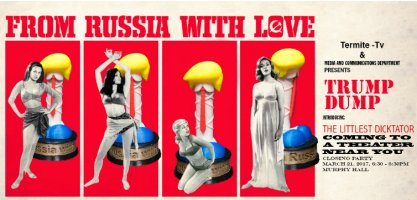
Hospedales wrote, “I have recently been assigned a complaint from some students who allege that they suffered an adverse impact from exposure to your exhibit in Murphy Hall earlier this Spring.” Powell was asked to move parts of the installation to the basement in Arcadia’s library and informed that he could face further Title IX complaints because the artwork from the installation was still visible inside his office.
Fortunately, Arcadia dropped its investigation shortly after, but Powell’s investigation set off alarm bells. Investigations, even when short-lived, can themselves have a chilling effect on speech, even if no formal punishment is ultimately meted out.[17]
Polk State College: “Death of Innocence”
Serhat Tanyolacar’s 2014 run-in with censorship at the University of Iowa wasn’t his only encounter with an institution that preferred to avoid, rather than encourage, difficult conversations spurred by artistic expression. In 2018, Tanyolacar, who had joined Florida’s Polk State College as a part-time faculty member, submitted artwork to a faculty exhibition. Like Bermudez, he discovered that his contribution to the exhibition proved controversial.
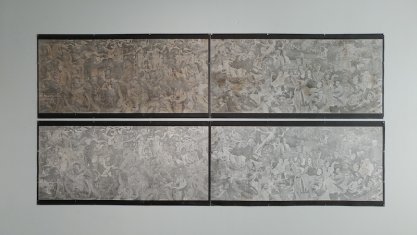
Tanyolacar’s artwork, titled “Death of Innocence,” depicted several poets and writers juxtaposed with a number of pictures of President Donald Trump and other political figures engaging in sexual activity. According to Tanyolacar, the piece was intended to encourage discussion and highlight “moral corruption and moral dichotomy.”
A Polk State administrator informed Tanyolacar that his artwork would not be displayed in the exhibition, explaining: “After review by the gallery committee and the gallery administrator it was agreed upon that your piece Death of Innocence should not be displayed.” She added that, because the college “offers classes and volunteer opportunities to our collegiate charter high schools and other high schools in Polk county,” Tanyolacar’s artwork “would be too controversial to display at this time.”
Tanyolacar contested the decision, writing that “controversial artworks are essential to the intellectual growth of our students, and displaying them should be encouraged by both the administration and the faculty.” The college, however, refused to relent and failed to show Tanyolacar’s “too controversial” artwork in its exhibition.[18]
Pennsylvania State University: “Portraits of Terror”
In 2006, Pennsylvania State University student Joshua Stulman prepared to open his 10-piece senior art exhibit, “Portraits of Terror.” That exhibit would not see the light of day at Penn State.
Stulman’s “visual thesis” focused on Islamic extremism and criticized violence and bigotry against Israel. However, three days before it was scheduled to open, Stulman was informed that his exhibit was canceled because it “did not promote cultural diversity” or “opportunities for democratic dialogue.”[19]
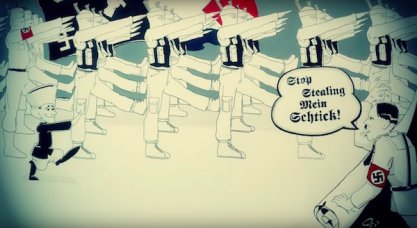
A year later, Stulman filed a lawsuit against Penn State, alleging that the university and parties responsible for the show's cancellation “deprived Plaintiff of his clearly-established rights to freedom of speech and expression secured by the First Amendment to the Constitution of the United States by and through their cancellation and prohibition” of “Portraits of Terror.”[20] The lawsuit was later settled, but could have easily been avoided had Penn State simply allowed Stulman to move forward with the exhibit.
Brandeis University: “Voices of Palestine”
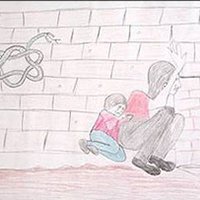
In May 2006, shortly after the censorship of Stulman’s pro-Israel display at Penn State, Brandeis University offered a similar treatment to student Lior Halperin, who organized a painting exhibition called “Voices of Palestine” for Palestinian teenagers to bring their point of view to the campus.
The exhibit, which included paintings of a girl lying in a pool of blood and a young amputee, was scheduled to run in the Brandeis library for two weeks but was removed after only four days due to student complaints that the depictions were one-sided.
A spokesperson indicated that Brandeis would not let the “one-sided” artwork be displayed unchallenged, saying “the university would consider displaying the artwork again in the fall, alongside pieces showing the Israeli point of view.”[21]
In response to the controversy, a Brandeis faculty committee later conducted a review of the university’s treatment of Halperin and acknowledged the university’s mistake, writing that “the Committee concluded that in removing the Voices of Palestine exhibit, the University committed a serious error.”[22]
Kennesaw State University: “A Walk in the Valley”
For the grand opening of its Bernard A. Zuckerman Museum of Art, Kennesaw State University commissioned Georgia State University professor Ruth Stanford to create an installation chronicling the history of a piece of land gifted to the university in 2009. That land was the homestead of writer Corra Harris.
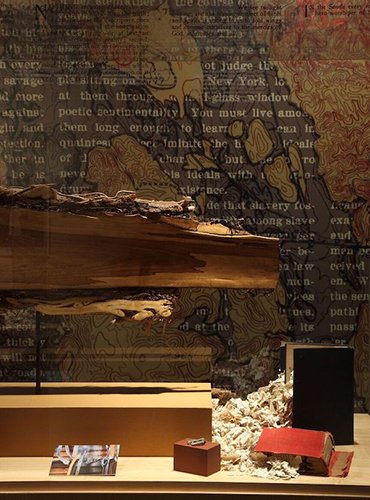
In “A Walk in the Valley,” Stanford sought to highlight Harris’ “complicated legacy,” including parts of an 1899 magazine article in which Harris rationalized lynching and called African-Americans “savage brute[s].” Before the opening of KSU’s new museum, President Daniel Papp ordered the installation’s removal because it didn’t fit the event’s “celebratory” nature.
KSU’s act of censorship backfired. Protesters gathered outside the museum wearing pictures of the installation and holding signs that read “CENSORED.” A petition for the installation’s reinstatement garnered over 1,300 signatures.[23]
Stanford was later told that the installation could be put back on display at the museum, with one qualification: It would be accompanied by additional explanatory materials. Later, KSU published a statement attempting to justify its decision, writing: “The exhibit does not exist in a vacuum; it is connected to a sensitive controversy in Kennesaw State’s recent past, which remains extremely raw for many University constituents.”[24] Two weeks later, after pressure, KSU relented and fully reinstated Stanford’s display.[25]
The apolitical isn’t always uncontroversial
An exhibit’s political message is often an ingredient in art controversies, but it’s not a necessary component. Sometimes, an image as benign as a poster of a TV character is enough to provoke censorship.
University of Wisconsin-Stout: Firefly, fascism, and the French fur trade
The University of Wisconsin-Stout has been no stranger to art controversies over the past decade. In 2011, theater professor James Miller decorated his office door with a poster featuring a line from actor Nathan Fillion’s character in the popular, but short-lived television series Firefly: “You don’t know me, son, so let me explain this to you once: If I ever kill you, you’ll be awake. You’ll be facing me. And you’ll be armed.”
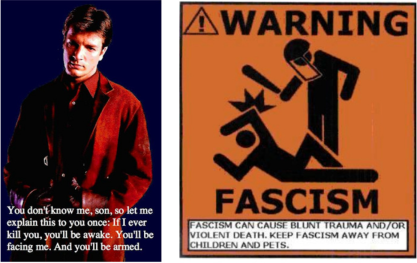
UW-Stout’s Chief of Police Lisa A. Walter removed Miller’s poster because it “refer[s] to killing.” After Miller replied, “respect my first amendment rights,” Walter stated that “the poster can be interpreted as a threat.” Walter then threatened Miller with criminal charges of “disorderly conduct” if he shared a similar poster again.
Outraged, Miller posted another flyer outside his door, this time one that read “Warning: Fascism” and mocked the chief of police’s hypersensitivity: “Fascism can cause blunt head trauma and/or violent death. Keep fascism away from children and pets.” Not to be outdone, Chief Walter removed this poster, too, claiming that it was a “threat” because it “depicts violence and mentions violence and death.” According to Chief Walter, UW-Stout’s “threat assessment team” had made the decision.
After intervention from FIRE, UW-Stout reversed its decision — nearly a month later.[26]
FIRE’s intervention, along with that of the National Coalition Against Censorship, was warranted again at UW-Stout in 2016, when Chancellor Bob Meyer decided that two historical paintings depicting the fur trade between Native Americans and white traders would be removed due to the potential “harmful effect” on those who viewed it.[27]
In response to criticism of the decision, Meyer chose not to put the paintings in storage, but instead moved them to locations where they could be viewed in a “controlled” manner, in one case by appointment only.[28] Meyer’s solution — which implied that artwork that makes viewers uncomfortable cannot be worthwhile — was hardly a solution at all.
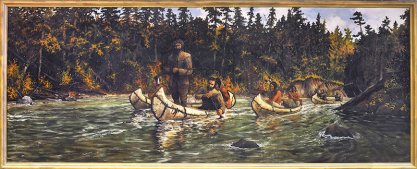
Southwestern College: Women’s History Month
In 2010, a Southwestern College student’s depiction of three professors submitted to SWC’s Fourth Annual Women’s History Month Street Painting Festival and Community Resource Fair was rejected because administrators considered it “controversial” and felt it did not fit into the “theme” of the festival.
The California college apparently found the artwork “controversial” because it depicted three professors who were suspended and banned from campus. The reason behind the disciplinary action? The professors were with students who were protesting beyond the college’s unconstitutional free speech zone.
Pushing back against the college’s justifications for censoring her work, the student said, “The events that happened last October until today were and are still a part of women’s history. Professor [Dinorah Guadiana-]Costa, I, and a lot of female students were there! That’s a slap to a lot of people’s faces.”[29]
University of Southern Maine Lewiston-Auburn: “Industrial Maine: Our Other Landscape”
In April 2018, University of Southern Maine President Glenn Cummings ordered three oil paintings to be removed from the Lewiston-Auburn campus’ Atrium Art Gallery, despite objections from the exhibition’s curator, Janice Moore.
The paintings by local artist Bruce Habowski were taken down after it was discovered that Habowski is a convicted sex offender. Habowski had been convicted of unlawful sexual contact in 1999 and sentenced to four years in jail, but he served a suspended sentence of six months. When Moore, the curator, arrived at the exhibition on April 6, she found empty spaces on the wall where Habowski’s artwork was meant to be.[30]
In response to criticism from Moore and the Portland chapter of the Union of Maine Visual Artists, the University’s communications department released a statement about the incident: “USM received a complaint from a member of the public. The complaint was not about the content of the art, but about the artist. After careful review, USM decided to remove his works from the exhibit.”[31]
The controversy at USM was part of a larger national conversation sparked by the #MeToo movement, weighing how artists should be viewed in light of allegations of sexual misconduct or assault. The questions regarding our understanding of artists who have committed terrible crimes and their artwork will likely not be resolved any time soon — but censorship by administrators will not provide any answers.
An empty theater
If someone doesn’t want to watch a play with themes or ideas they dislike, they can simply choose not to attend the performance. At some campuses, however, students, administrators, and even a government official have done what they can to ensure that no one could witness performances that offend them.
California State University, Long Beach: N*W*C*
College campuses often serve as a place for difficult conversations about race and prejudice, but those conversations were halted at California State University, Long Beach in 2016, when the university canceled a scheduled performance of a play due to its provocative content.
That play, N*GGER WETB*CK CH*NK (N*W*C*), is performed by Asian-American, Hispanic-American, and African-American actors who share personal stories about how the construct of race shapes their lives while mocking the stereotypes and slurs that perpetuate racism. About a month before the scheduled performance, the university announced its cancellation. According to a spokesperson, “Members of the campus community [this year] voiced concerns that the performance wasn’t achieving the goal of constructing a dialogue about racial relations.”[32]
In protest of the cancellation, Michele Roberge resigned from her role as executive director of the Richard & Karen Carpenter Performing Arts Center, where the play was scheduled to be performed.[33]
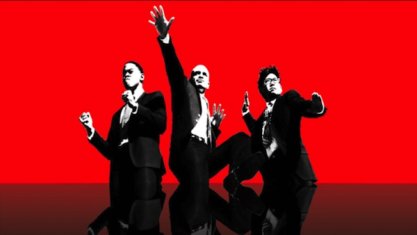
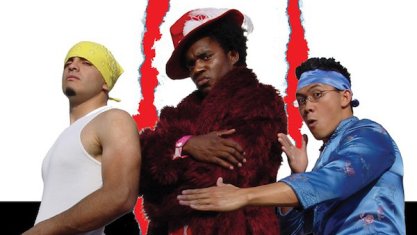
Brandeis University: Buyer Beware
In late 2017, renowned playwright Michael Weller’s fictional play about offended Brandeis University students pressuring their university to cancel a scheduled artistic performance resulted in real-life Brandeis students doing the same.
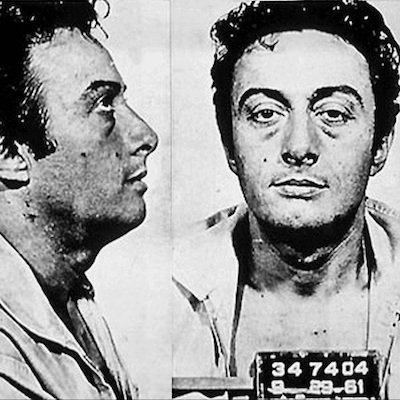
The play, Buyer Beware, is about a fictional Brandeis student named Ron who decides to do a comedy routine on campus after listening to material he found in Brandeis’ Lenny Bruce archives, and the trouble that ensues due to the nature of Bruce’s work. Lenny Bruce, a groundbreaking comedian, was subjected to six obscenity trials for the words he used in his shows.[34]
Brandeis announced the cancellation of Buyer Beware in November 2017, writing that theater faculty “considered the challenging issues it raised” and “felt that more time was needed to produce the play appropriately.” The production had been the subject of student protests and demands for cancellation. The university’s statement went on to say that Weller and the university discussed later dates to stage the production before Weller ultimately decided to cancel it because “rehearsals of the play, and growing sentiment among some students in the theater department, might not be conducive to the creative atmosphere desired for a premiere presentation of a new work.”[35]
Saint Mary’s University: Medea
In 2015, Saint Mary’s University of Minnesota fired adjunct professor David Hillman after he translated Seneca’s Medea and then worked with the drama department to put on an authentic production of the play. The university apparently disapproved of Hillman’s decision to have cast members point fascina — phallus-shaped objects — at audience members to replicate the ancient practice of “holding a mirror up to the audience and confronting viewers with their lavish and corrupt lifestyles.”
Administrators first banned the fascina on the basis that they were too suggestive. Hillman’s firing came soon after.
The official justification for firing Hillman was unclear. The university claimed he was terminated for sexual harassment, but it never offered to him the details of his alleged misconduct. Saint Mary’s fired Hillman from his teaching role as well as the janitorial position he held at the university.[36]

Tarleton State University: Corpus Christi
In 2010, a student performance of the play Corpus Christi, which portrays Jesus as a gay man, was canceled at Tarleton State University in Texas after calls for censorship and security threats.
The performance, which was to be directed by a student as fulfillment of an assignment for an advanced directing class, was canceled, along with three other student-led plays, by the class’ professor. TSU’s statement regarding the cancellation explained: “The professor cited safety and security concerns for the students as well as the need to maintain an orderly academic environment as reasons for canceling the plays.”
Texas’s then-Lieutenant Governor David Dewhurst supported the censorship, announcing, “Every citizen is entitled to the freedom of speech, but no one should have the right to use government funds or institutions to portray acts that are morally reprehensible to the vast majority of Americans.”
However, the First Amendment won out in the end. TSU President F. Dominic Dottavio recognized that the university was “legally bound to allow the student production to go forward.”[37]
Washington State University: Passion of the Musical
When Washington State University student Chris Lee wrote Passion of the Musical, an intentionally offensive satirical play meant “to show people we’re not that different, we all have issues that can be made fun of,” he expected that some people would be offended by it. What he didn’t expect was that his university would endorse — financially and morally — hecklers who disrupted his play and threatened its actors.
But that’s exactly what happened. In 2005, a group of 40 student protestors repeatedly stood up, shouted about being offended, and threatened audience members and the cast with violence during a production of the play. Worse still, administrators at Washington State’s Office for Campus Involvement purchased the hecklers’ tickets and campus security refused to remove the hecklers.[38]
After multiple letters from FIRE, the university acknowledged its error and posted a notice before each performance of Passion of the Musical stating, in part: “Please be aware that disruption to this performance, or any program will not be tolerated and will be dealt with accordingly, up to and including participants being escorted from the venue.”[39]
Conclusion: Lessons learned
By censoring artwork considered offensive by members of the campus community, public universities risk violating the First Amendment, which they are legally bound to uphold. Private colleges jeopardize their moral, and often contractual, obligations to respect freedom of expression. In Papish v. Board of Curators of the University of Missouri, 410 U.S. 667 (1973), the Supreme Court held that “the mere dissemination of ideas — no matter how offensive to good taste — on a state university campus may not be shut off in the name alone of ‘conventions of decency.’” Universities navigating art controversies, whether through student complaints or national media attention, should remember the court’s words when deciding their next steps. The stories shared in this report offer a helpful reminder for universities considering censorship: Attempts to censor expression often only ensure that more people will ultimately see it.
Encountering artwork that shocks or offends us may sometimes be an unpleasant experience, but having officials determine which artistic expression we may or may not encounter is a far worse outcome.
Footnotes
[1] Melissa Chan, University at Buffalo student hangs ‘White Only’ signs on campus, sparks outrage, N.Y. Daily News (Sep. 18, 2015), http://www.nydailynews.com/news/national/university-buffalo-student-hangs-white-signs-article-1.236608.
[2] Letter from Peter Bonilla, Dir., Individual Rights Defense Program, Found. for Indiv. Rights in Educ., and Svetlana Mintcheva, Dir. of Programs, Nat’l Coal. Against Censorship, to Sally Mason, President, Univ. of Iowa (Dec. 12, 2014), available at https://www.thefire.org/fire-ncac-letter-university-iowa.
[3] Controversial art at UI raises civility, freedom issues, Iowa City Press-Citizen (Dec. 5, 2014), https://www.press-citizen.com/story/news/education/university-of-iowa/2014/12/05/ui-asks-artist-remove-work-pentacrest/19957345.
[4] Alex Morey, FIRE Notes Uptick in Student-Driven Calls for Art Censorship as Salem State Shutters Exhibit [UPDATED], Found. for Indiv. Rights in Educ. (Dec. 1, 2016), https://www.thefire.org/fire-notes-uptick-in-student-driven-calls-for-art-censorship-as-salem-state-shutters-exhibit.
[5] Scott Jaschik, When Art Offends (and Isn’t Understood), Inside Higher Ed (Nov. 28, 2016), https://www.insidehighered.com/news/2016/11/28/salem-state-university-facing-criticism-minority-students-shutters-art-exhibit.
[6] Press Release, Public University Threatens Student with Expulsion for Anti-Lynching Protest, Found. for Indiv. Rights in Educ. (Dec. 8, 2016), https://www.thefire.org/public-university-threatens-student-with-expulsion-for-anti-lynching-protest.
[7] David Thackman, Tillman Hall protest begins, ends peacefully at Winthrop, Charlotte Observer (Sept. 28, 2016), http://www.charlotteobserver.com/news/special-reports/charlotte-shooting-protests/article104801971.html.
[8] Email from Daniel F. Mahony, President, Winthrop Univ., to students at Winthrop Univ. (Nov. 14, 2016), available at https://www.thefire.org/incident-near-tillman-hall.
[9] Winthrop Police close investigation of vandalism found outside Tillman Hall, FOX 46 Charlotte (Dec. 9, 2016), http://www.fox46charlotte.com/news/local-news/winthrop-police-close-investigation-of-vandalism-found-outside-tillman-hall.
[10] Press Release, Victory: Student Cleared of Baseless Charges from Anti-Lynching Art Display, Found. for Indiv. Rights in Educ. (Dec. 19, 2016), https://www.thefire.org/victory-student-cleared-of-baseless-charges-from-anti-lynching-art-display.
[11] Adam Steinbaugh, Torn down ‘Report Illegal Aliens’ posters at Gustavus Adolphus College turn out to be art installation criticizing anti-immigrant attitudes, Found. for Indiv. Rights in Educ. (Mar. 23, 2017), https://www.thefire.org/torn-down-report-illegal-aliens-posters-at-gustavus-adolphus-college-turn-out-to-be-art-installation-criticizing-anti-immigrant-attitudes.
[12] Peter Bonilla, Gainesville State College President Censors Faculty Art Critical of Confederate Heritage, Found. for Indiv. Rights in Educ. (Mar. 8, 2011), https://www.thefire.org/gainesville-state-college-president-censors-faculty-art-critical-of-confederate-heritage.
[13] Tricia Nadolny, Gainesville State decision sparks silent protest, Gainesville Times (Feb. 4, 2011), https://www.gainesvilletimes.com/news/gainesville-state-decision-sparks-silent-protest.
[14] Sarah McLaughlin, University of New Hampshire’s removal of anti-sexual harassment exhibit undermines free speech, Found. for Indiv. Rights in Educ. (Apr. 4, 2017), https://www.thefire.org/university-of-new-hampshires-removal-of-anti-sexual-harassment-exhibit-undermines-free-speech.
[15] Stephanie Morales, UNH harassment display removed, Seacoastonline.com (Mar. 31, 2017), http://www.seacoastonline.com/news/20170331/unh-harassment-display-removed.
[16] Press Release, The University of New Hampshire earns FIRE’s top rating for free speech, Found. for Indiv. Rights in Educ. (May 14, 2018), https://www.thefire.org/university-of-new-hampshire-earns-fires-top-rating-for-free-speech.
[17] Sarah McLaughlin, Arcadia drops Title IX investigation into professor’s anti-Trump art installation, Found. for Indiv. Rights in Educ. (Jun. 29, 2017), https://www.thefire.org/arcadia-drops-title-ix-investigation-into-professors-anti-trump-art-installation.
[18] Press Release, ‘Too controversial’: Polk State College rejects professor’s anti-Trump artwork, Found. for Indiv. Rights in Educ. (Feb. 20, 2018), https://www.thefire.org/too-controversial-polk-state-college-rejects-professors-anti-trump-artwork.
[19] Chris Perez, Penn State Gets It Wrong, Found. for Indiv. Rights in Educ. (Apr. 25, 2006), https://www.thefire.org/penn-state-gets-it-wrong.
[20] Tara Sweeney, Student Suing Penn State for Art Censorship, Found. for Indiv. Rights in Educ. (Jun. 21, 2007), https://www.thefire.org/student-suing-penn-state-for-art-censorship.
[21] Tara Sweeney, Brandeis Takes a Stab at Art Censorship, Found. for Indiv. Rights in Educ. (May 3, 2006), https://www.thefire.org/brandeis-takes-a-stab-at-art-censorship.
[22] Report of the Comm. on Exhibitions and Expression, Brandeis Univ., to Marty Krauss, Provost, Brandeis Univ. (Sept. 7, 2006), available at https://www.brandeis.edu/ethics/pdfs/newsarchive/Exhibitions_Expression_Cmte_Report.pdf.
[23] Susan Kruth, After Criticism, Kennesaw State Partially Reconsiders Censorship of Art Exhibit; Problems Remain, Found. for Indiv. Rights in Educ. (Mar. 5, 2014), https://www.thefire.org/after-criticism-kennesaw-state-partially-reconsiders-censorship-of-art-exhibit-problems-remain.
[24] Susan Kruth, Kennesaw State Releases Self-Contradictory Statement on Art Installation Controversy, Found. for Indiv. Rights in Educ. (Mar. 7, 2014), https://www.thefire.org/kennesaw-state-releases-self-contradictory-statement-on-art-installation-controversy.
[25] Svetlana Mintcheva, Kennesaw State reinstates art installation, but is there more trouble brewing in Academia? Trigger warnings., Nat’l Coal. Against Censorship (Mar. 14, 2014), http://ncac.org/blog/kennesaw-state-reinstates-art-installation-but-is-there-more-trouble-brewing-in-academia.
[26] Press Release, Victory at UW-Stout: Chancellor Folds after Censorship of ‘Firefly’ and Anti-Fascism Posters, Found. for Indiv. Rights in Educ. (Oct. 4, 2011), https://www.thefire.org/victory-at-uw-stout-chancellor-folds-after-censorship-of-firefly-and-anti-fascism-posters.
[27] Jas Chana, Uni. of Wisconsin-Stout Moves to Censor Paintings of First Nations People; UPDATE: Chancellor Modifies Course, Paintings to be Relocated, Nat’l Coal. Against Censorship (Aug. 3, 2016), http://ncac.org/letters/university-of-wisconsin-stout-moves-to-censor-paintings-depicting-first-nations-people.
[28] Alex Morey, FIRE, NCAC Disappointed with UW-Stout’s New Plan for Controversial Paintings, Found. for Indiv. Rights in Educ. (Aug. 9, 2016), https://www.thefire.org/fire-ncac-disappointed-with-uw-stouts-new-plan-for-controversial-paintings.
[29] Adam Kissel, Student Artwork Too ‘Controversial’ for Southwestern College, Found. for Indiv. Rights in Educ. (Mar. 8, 2010), https://www.thefire.org/student-artwork-too-controversial-for-southwestern-college.
[30] Bill Rickards, By censoring art, University of Southern Maine misses an opportunity, Found. for Indiv. Rights in Educ. (May 11, 2018), https://www.thefire.org/by-censoring-art-university-of-southern-maine-misses-an-opportunity.
[31] Bob Keyes, Sex offender’s art removed from Lewiston exhibit, Sun Journal (May 5, 2018), http://www.sunjournal.com/sex-offenders-art-removed-from-lewiston-exhibit.
[32] Joel Beers, Long Beach St. Pulls Plug on N*GGER WETB*CK CH*NK Show. Cancellation, or Censorship?, OC Weekly (Sept. 7, 2016), https://www.ocweekly.com/long-beach-st-pulls-plug-on-n-gger-wetb-ck-ch-nk-show-cancellation-or-censorship-7491571.
[33] Press Release, FIRE, NCAC, and DLDF Demand Cal State Long Beach Reverse Censorship of Play, Found. for Indiv. Rights in Educ. (Sept. 28, 2016), https://www.thefire.org/fire-ncac-and-dramatists-legal-defense-fund-demand-cal-state-long-beach-reverse-censorship-of-play.
[34] Nico Perrino, The ‘silencing’ of ‘Buyer Beware’ at Brandeis, Found. for Indiv. Rights in Educ. (Nov. 20, 2017), https://www.thefire.org/the-silencing-of-buyer-beware-at-brandeis.
[35] University’s statement related to the Creative Arts Award and ‘Buyer Beware,’ Brandeis Univ., (Nov. 6, 2017), http://www.brandeis.edu/now/2017/november/creative-arts-statement.html.
[36] Alex Morey, Silenced at Saint Mary’s: Censorship and Academic Freedom Concerns Raised After Professor’s Firing, Found. for Indiv. Rights in Educ. (Jan. 11, 2016), https://www.thefire.org/silenced-at-saint-marys-censorship-and-academic-freedom-concerns-raised-after-professors-firing.
[37] Will Creeley, At Tarleton State University in Texas, Heckler’s Veto Thwarts Student Performance, Found. for Indiv. Rights in Educ. (Mar. 29, 2010), https://www.thefire.org/at-tarleton-state-university-in-texas-hecklers-veto-thwarts-student-performance.
[38] Press Release, Washington State University Bankrolls Vigilante Censorship, Found. for Indiv. Rights in Educ. (Jul. 18, 2005), https://www.thefire.org/washington-state-university-bankrolls-vigilante-censorship.
[39] Press Release, Victory for Freedom of Expression at Washington State, Found. for Indiv. Rights in Educ. (Dec. 12, 2005), https://www.thefire.org/victory-for-freedom-of-expression-at-washington-state.

